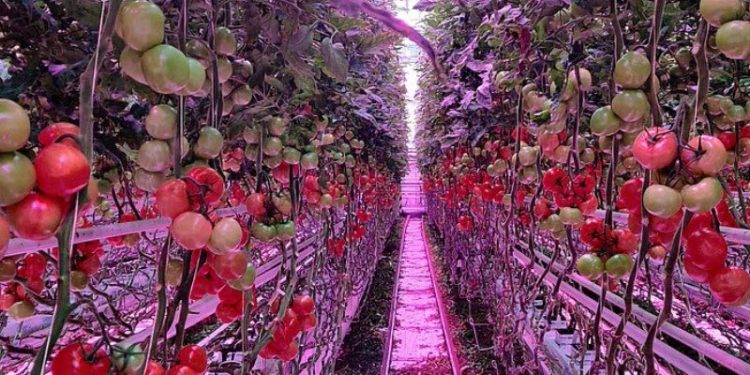The light spectrum has a great influence on the activity of bumblebees. This is one of the outcomes of the “Fossil-free Tomato with LED” cultivation study conducted by the Delphy Improvement Centre, Groen Agro Control and Wageningen University’s Greenhouse Horticulture and Research Unit.
The culture studies not only experimented with the intensity of the lamps, but also with the adjustment of the exposure time, and studied the effect of increasing the exposure with cheaper watches. “Last winter we kept the exposure period from 10 pm to 4 pm. So the relatively cheaper night hours have more exposure at the expense of the late afternoon hours, which are usually more expensive,” explains Delphy’s Stein Jochems.
A consequence of this exposure strategy is that most pollination should take place outdoors at night. “The moment the sun starts to shine, the flowers are already starting to close. This means that the period during which bumblebees can pollinate under sunlight is quite short,” Jochems says. Although the bumblebees in the daytime spectrum were much more active, he expects enough whimsy can be afforded on a lighted night.
Settlement numbers are still unknown
Whether the extra whim results in better blooms depends on the bunches harvested. The researcher reports that the grapes were laid out during the darkest period and will soon be collected. “So far, the calculation numbers indicate a slight difference between the broad or standard spectrum in favor of a broader spectrum.” Previously, it was found that bumblebees leave the boxes earlier with a wider spectrum.
*Read also: Dimmable LED lighting offers potential in today’s energy market
When an alternative spectrum indicates a better setting, Jochems says practical applications can be considered. ‘In addition to being a whim, the microclimate around the flowers is important for planting. In the future, it’s interesting to work with the pollinator block, lighting it up for a couple of hours with a higher proportion of greens and blues and sending it to a drier climate around the flowering cluster.’
Cultivation research will continue until the end of the growing season, with one of the goals for this year being to use the most efficient lighting strategy. “Both for the wallet and for the harvest,” the researcher emphasizes.









